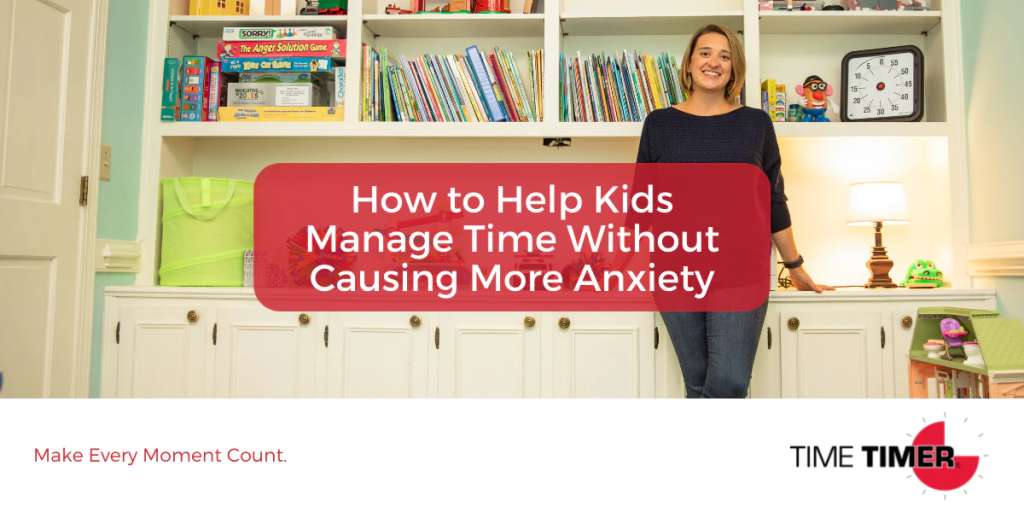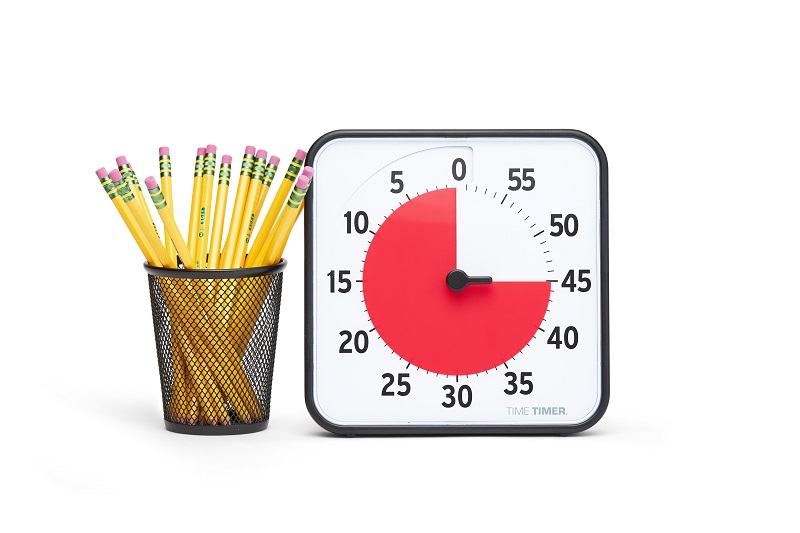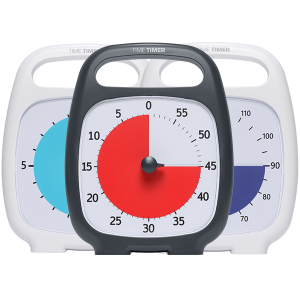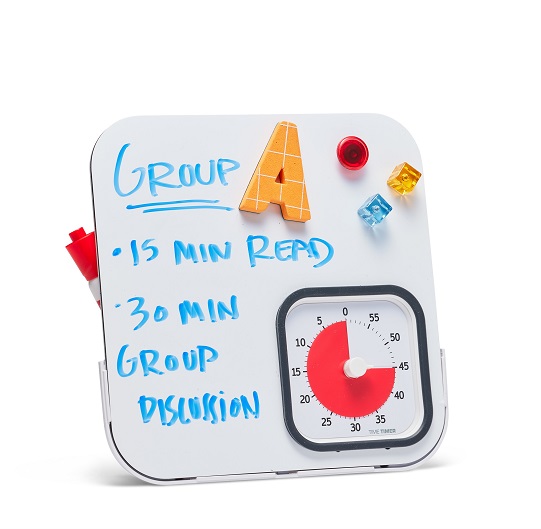
By Emily W. King, Ph.D.
Being in a time crunch creates anxious feelings for all of us. The morning rush or that deadline at work gives most of us a stress response. Now imagine that you are being asked to do these things before a timer goes off plus you are not in charge of when the alarm will sound.
As a child psychologist who works with anxious children, I have witnessed many fearful reactions to timers. I’ve seen kids put their hands over their ears at the sight of a timer. I’ve received a litany of questions about how long we have to play. Both are indicators of high anxiety about the limits of time in addition to the startling sensory experience of an alarm sounding when the fun is done.
How Anxiety Shuts Down Learning
The reason we want to avoid causing additional anxiety is because when we experience high anxiety, we cannot learn or complete the task in front of us. Our amygdala (where emotional functions are located in the brain) quite literally hijacks our frontal lobe (where executive functions are located) and we lose the ability to plan what’s next because our brain’s only job at that moment is to keep us safe from danger.
High anxiety sends most of us into fight, flight or freeze, which is helpful if there is a tiger on the loose or our house is on fire, but sometimes anxiety can be irrationally high and our brains think we are in danger when our body is actually safe and the task before us is just uncomfortable. In children, fight, flight, or freeze can look like arguing, hiding, or a child’s mind going blank. So, adding the stress of being timed on top of a task being difficult can make matters worse.

Why Feeling Time is Important
So, why even use timers? Many neurodivergent individuals diagnosed on the autism spectrum or with ADHD experience weaknesses in executive functioning and struggle to feel time. We rely on our executive functioning skills to plan, initiate, attend to, and see a task through to completion. Feeling time is the internal sensation we experience, for instance, when we have one more item on our to-do list and we predict that we can successfully squeeze it in before we have to leave for an appointment. When a person struggles to feel time, they often cannot predict the time frame needed for an activity which leads to difficulty problem solving a needed pivot. We can teach kids to feel time by showing them what time looks like. The Time Timer is my favorite tool for doing this, along with the following strategies to minimize additional anxiety.
Use Visual Instead of Digital
If a child is not yet reading a clock, we tend to think digital is best. However, digital clocks do not support teaching the feel of time because they only represent numbers that change and not a visual that represents the passing of time. When a child cannot see the time span getting smaller, they are often startled and even more anxious when the time is up.
Build Trust With No More Alarms
Sometimes when I introduce the Time Timer in my therapy playroom, children immediately look anxious. This is the moment where we sit down to play with the Time Timer and I explain that my timer’s sound is turned off and will always be turned off. Sometimes trusting me and this new plan takes a few sessions, but over time children learn that my timer is silent and we only use the visual movement of the timer to help us track time in the playroom. Remember that the opposite of anxiety is trust so we must establish trust with a child through a predictable routine of using the timer in a way that does not feel scar
Support Transitions with Preferred Tasks
Most of us start out using timers by saying something like, “When the timer goes off, it’s time to clean up.” However, for an anxious child, reminding them of when the fun is done and counting down the minutes until we take the fun away increases anxiety. So, try a predictable routine instead. In my therapy playroom, the child and I create a visual play plan with pictures or written words to check off as we go. For those who experience strong emotions when leaving the playroom, the last task is something preferred that the parent and I have come up with to support the transition. For instance, I might say, “When the red goes away it will be time to unlock mom’s car” or “When the timer gets to zero, it will be time for your favorite snack in the car.” After a few sessions of this routine, a child’s anxiety tends to reduce because they know they will come back to play with me and the transition of getting to the car distracts them from their anxiety about the play being over. The timer just prompts the next thing on the schedule rather than reminding a child that the fun is done.
How to Teach Waiting
Waiting is one of the most anxiety-provoking situations for children with executive functioning weaknesses who cannot feel time. When will it be their turn? When will their parent be available? When will the teacher call on them? It could feel like one minute or 200 hours! The trick here is to set the timer for when the preferred activity or person will be available and have the child come get you when it’s time. Keeping track of the passing time will help distract a child from waiting as well as give them a sense of control and autonomy in the process. Using a visual timer for waiting also creates an experience of feeling excited when the timer runs out rather than feeling disappointed when the timer is done. Do be aware that for this strategy to work, we have to consistently be ready to transition with kids so they can count on us to show up for them.
When to Seek Professional Help
Even with these strategies, some children will continue to experience anxiety about time. This likely means that they may not be developmentally ready to work on the concept of feeling time. Work with your child’s occupational therapist, mental health provider, or teacher to come up with a plan that best supports their emotions at times of transition that builds consistency and trust, both of which will help reduce anxiety.
About the Author, Emily W. King, Ph.D.
I am a child psychologist, and former school psychologist, who has spent the last 20 years working with neurodivergent children and teens along with their families and teachers in schools and private practice. In my therapy practice, I specialize in providing DIR/Floortime and CBT for neurodivergent kids and tweens. The children I have worked with over the years have taught me so much, and so have their parents and teachers. I created my online resources to reach families and educators beyond my psychology practice. My goal is to help parents and teachers sift through all of the recommendations in an effort to find the balance between supporting a child as they learn new skills and creating the space that keeps them regulated and connected. Read more about me here: https://www.parentingonyourownpath.com.


